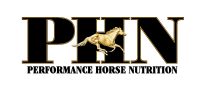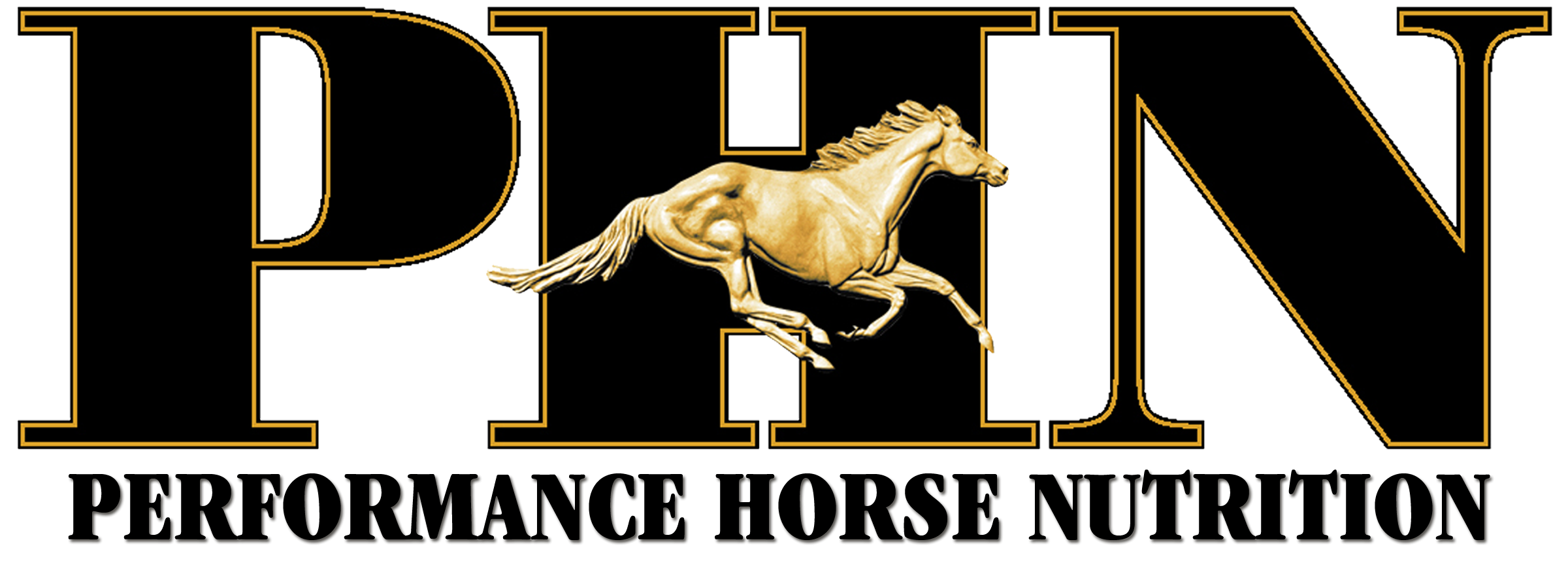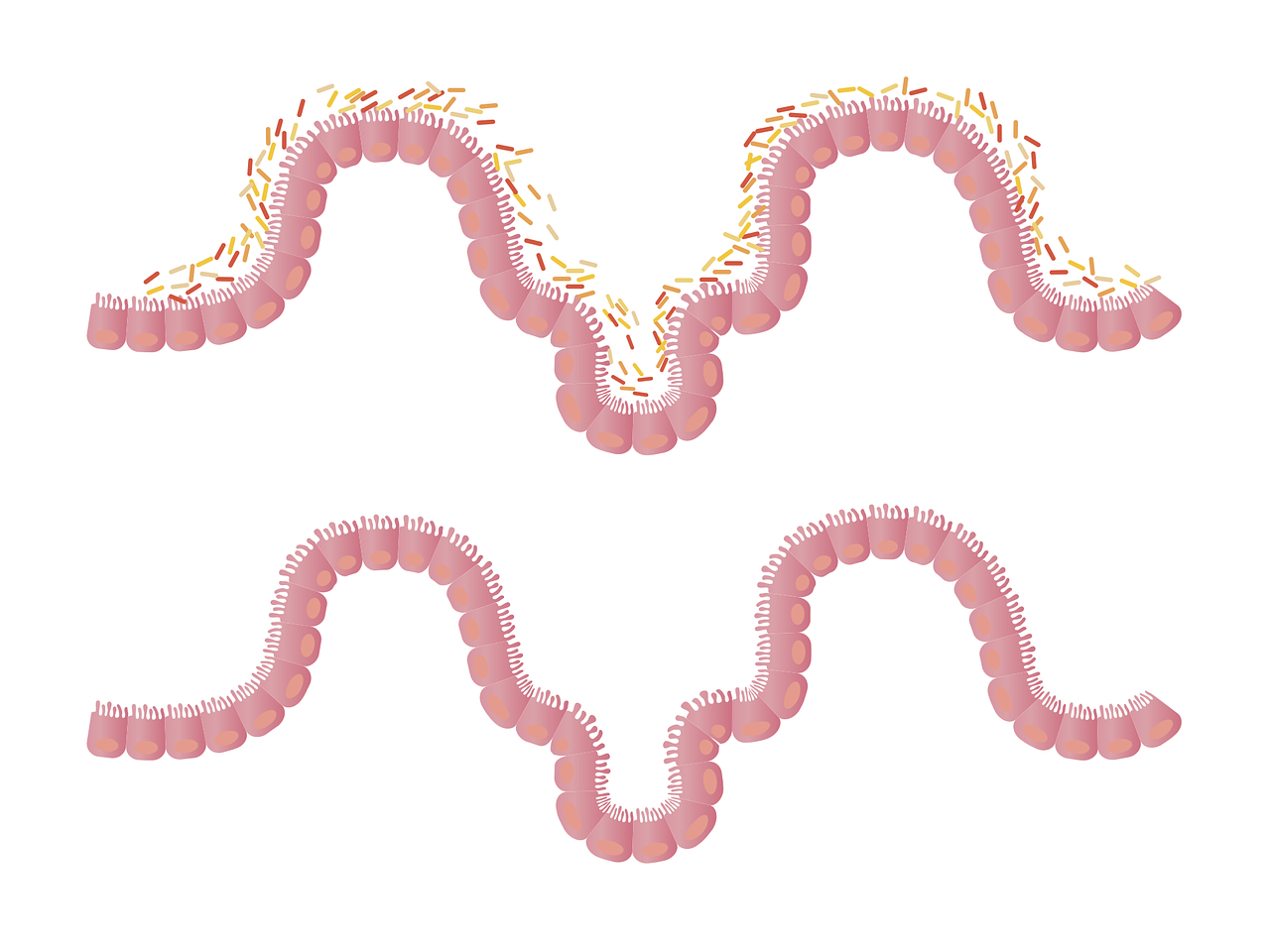LEAKY GUT
IN HORSES
2023

Written by Dr. Stephen Duren & Dr. Tania Cubitt – Performance Horse Nutrition
The digestive system of the horse is truly amazing. Simplistically, the digestive system of the horse can be thought of as a hollow tube that passes through the body from the mouth to just under the tail. It has the task of taking feed material in and then digesting that material. Nutrients that are useful to the horse are absorbed through the lining of the digestive tract while waste products are passed out of the digestive tract as manure. Horses have the ability to digest feed material utilizing enzymes in the small intestine, similar to humans. They also have the ability to ferment feed material in the large intestine with the help of an extensive microbial (bacteria, yeast, fungi) population.
The ability of the digestive system to successfully digest feed and absorb nutrients is just part of its function. The digestive system is also responsible for keeping harmful substances from entering the body. The horse, through normal grazing and feeding behavior, will take in many potentially dangerous substances that should not be absorbed across the lining of the digestive tract into the body. These substances can cause of host of conditions including digestive upset (colic), laminitis and numerous diseases. In fact, dysfunction of the digestive system is the second leading cause of death in horses behind old age. With the importance of proper digestive system function clearly established, let’s take a closer look at the digestive system and how a “Leaky Gut” can be a disaster for horses.
Architecture of the Digestive System
As previously stated, the digestive tract of a horse is simply a hollow tube that passes through the horses’ body. The tube is lined with intestinal epithelial cells. The epithelial cells are arranged in a single layer similar to individual building blocks. One end of the epithelial cell is in contact with material within the intestine, while the other end of the cell is in contact with the blood supply that allows absorbed material access to the body. These epithelial cells are covered with a thin, protective mucus barrier. The individual epithelial cells are positioned side by side to prevent material from the digestive tract from slipping between the cells and entering into the body. The areas between epithelial cells are further sealed with proteins called junctional proteins. These junctional proteins form what are termed “tight junctions” between epithelial cells preventing unwanted substances from entering the body. Normal absorption of feed nutrients occurs through these tight junctions. In a healthy horse, these junctions do not allow undigested food particles or toxic substances to pass through into the blood stream.
A Damaged Digestive System
Integrity of tight junctions is critical to animal health. If they are damaged, harmful substances have direct access from the digestive system to the blood stream of the horse. The breakdown of tight junctions leads to the term “leaky gut” where the digestive system becomes an avenue for the introduction of sickness and disease to the horse. Tight junctions can be damaged by several factors including: changes in type/amount of forage, grain feeding, mycotoxins from moldy feed, heat stress, strenuous exercise, transportation stress, certain medications, confinement, dehydration, feeding management, colonic ulcers and pathogenic bacteria.
Once the intestinal barrier or tight junctions are damaged, the body will begin an inflammatory response to help heal damaged tissue. The size of the inflammatory response depends on the amount and extent of gut damage. The body will also mount an immune response to the foreign material that enters circulation. In mild cases, the results of leaky gut may cause weight loss or decreased performance. However severe cases of leaky gut may result in a full-fledged systemic inflammatory response throughout the body, organ damage and even death. Systemic inflammation, that is inflammation affecting the whole body, is now thought to be a factor in development of equine metabolic syndrome, insulin resistance and laminitis.
Healing with Nutrition
A damaged digestion system is healed with nutrition. Luminal nutrients are beneficial nutrients that don’t get absorbed into circulation, but instead are utilized by epithelial cells to facilitate healing. These nutrients can provide fuel for tissue healing or stimulate cell growth, release of hormones or stimulate mucus production. Nutrients being studied with specific healing capabilities include: amino acids, bacteria, probiotics and prebiotics. Other interesting substances being studied include butyric acid – a short chained volatile fatty acid and zinc a mineral. Butyric acid is a primary energy source for epithelial cells and serves a critical role in cell repair. In a healthy horse, the normal bacterial fermentation of fiber produces butyric acid. In sick horses, fermentation is compromised and butyric acid may be limited. Zinc is involved in many chemical reactions within the body designed to signal cell growth and repair of many tissue types. Day to day management and care to avoid or limit the extent of leaky gut in horses would include feeding high quality forage regularly to stimulate the growth of healthy bacterial populations in the gut.
- Stewart, A.S. et al., Alterations in Intestinal Permeability: The Role of Leaky Gut in Health and Disease. Journal of Equine Veterinary Science. 2017. 1-13.
- Ma X, et al. Butyrate promotes the recovering of intestinal wound healing through its positive effect on the tight junctions. J Anim Sci. 2012. 90: 266–268.
- Sturniolo GC, Di Leo V, Ferronato A, D’Odorico A, D’Inca R. Zinc supplementation tightens “leaky gut” in Crohn’s disease. Inflamm Bowel Dis 2001;7:94–8.

